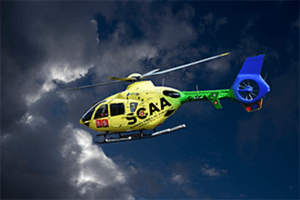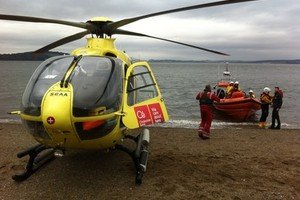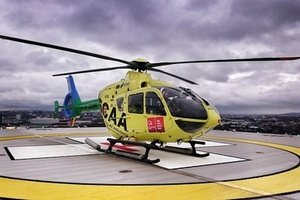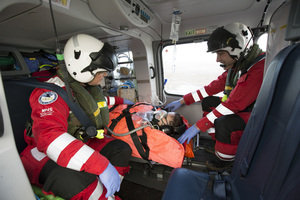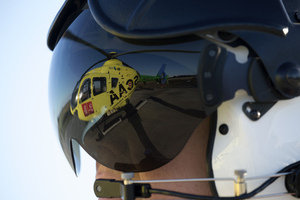
Scotland's Charity Air Ambulance - a farmer's lifeline
Many farm accidents prove so severe or so remote that an air ambulance is often the most appropriate resource to get expert paramedic attention quickly to the patient and the injured or ill person to advanced hospital care - fast.
Scotland's Charity Air Ambulance (SCAA), the country's only charity-funded air ambulance, is supported by the farming community - and with good reason. The charity air response has proved a vital lifeline time and time again to farmers and agricultural workers across the whole of Scotland.
Farm-based incidents attended by SCAA in the past year alone include equestrian accidents, heart attacks and strokes, machinery injuries, vehicle accidents, falls from heights and animal crushing and trampling injuries.
And agricultural emergencies throw up a unique set of challenges for our airborne rescuers.
SCAA's senior pilot Captain Russell Myles explained that livestock, crops, farm machinery and rough or steep terrain could all present hazards for the approaching helicopter.
"We try to make our approach so that livestock have somewhere to run free and are not herded into a corner," he said. "We also try to minimise damage to standing crops by landing the skids parallel to the machinery tracks and the furrows."
Farmers' clothing tends to merge into the landscape, making pinpointing the incident scene more difficult from the air.
"It's really helpful if the farm workers can give us some highly visible sign to guide us to the incident scene - a small fire giving off smoke or brightly coloured kit or clothing to highlight the site."
SCAA Lead Paramedic John Pritchard praised the farming community for the help the air ambulance crew receive.
"Farmers tend to be very stoic and cope well with the stress and trauma of a farm accident," he said. "They also know that getting us to the patient as quickly as possible is essential and we're indebted to those who meet the aircraft with vehicles to ferry us to the scene or help carry a patient off the hills to the helicopter.
"Others will ensure we can land safely as close to the incident as possible, keeping livestock away from the aircraft and opening gates and moving obstacles to help us gain access quickly and easily."
John highlighted one farmer who had the presence of mind to arrange feed troughs into a large "H" to guide the helicopter to his land.
Agricultural accidents can often involve major trauma such as limb damage, internal injuries or broken and fractured bones.
"It's vital that we get bleeding stemmed, fractures splinted and the patient stabilised and airlifted to hospital as quickly as possible," said John. "Farming colleagues on the ground always play a key part in ensuring we can get our job done."
SCAA often opts to land in a roadside field when called to road traffic collisions, rather than block the highway by landing on the road itself.
"We are indebted to farmers for their understanding when we set down on their property to get as close to the accident scene as possible," said John. "They know that every second counts and, again, will often turn up to transport us to the scene if we have to land some distance away."
